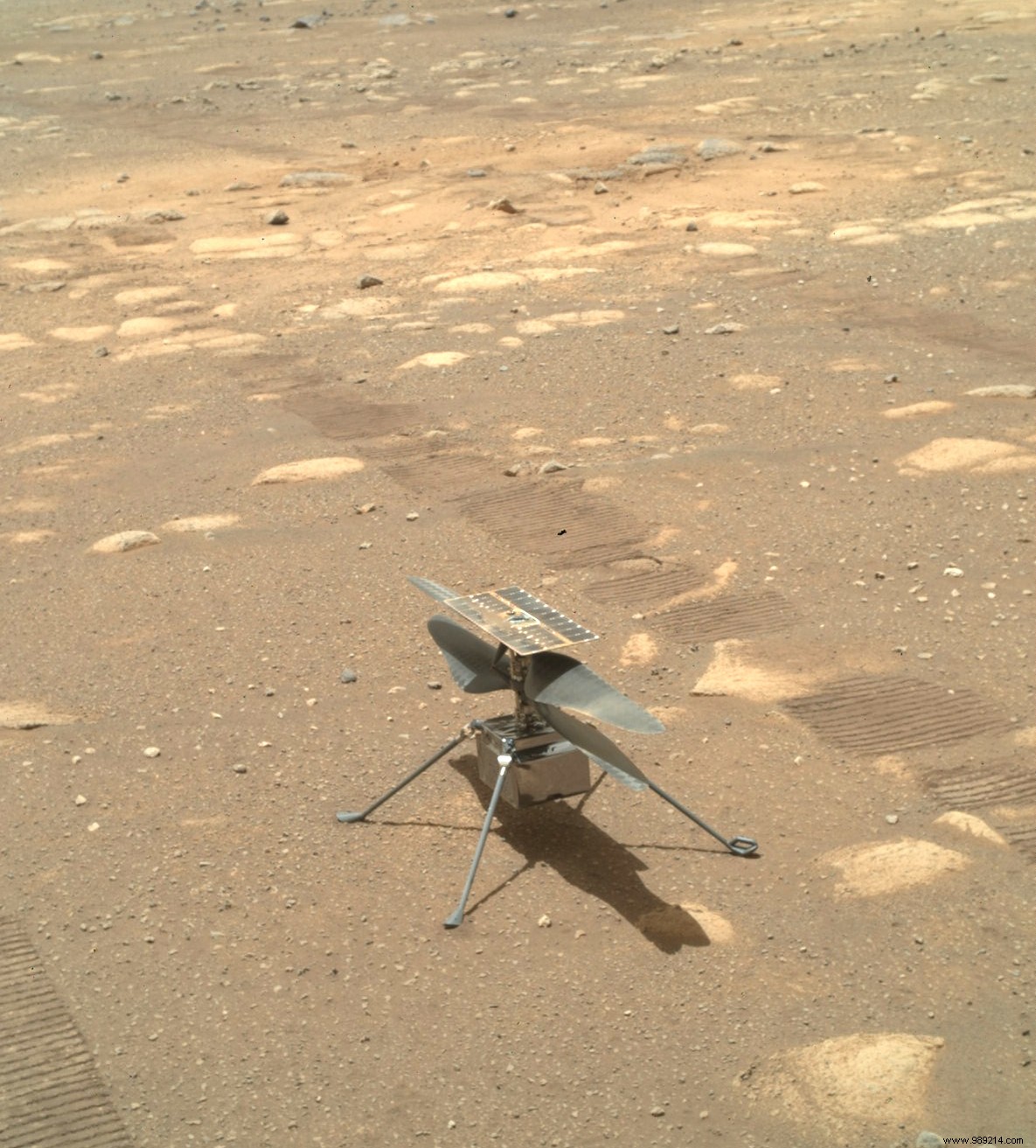NASA will attempt to fly its small Ingenuity helicopter early this Monday. The attempt should take place around 9:30 a.m. French time. It will nevertheless be necessary to wait a few hours to know the outcome of this historic trial, the time for the American agency to receive the data collected. News of the rotorcraft should be able to be communicated from 12:15 p.m. French time.
For several days the mission engineers have been preparing for the first flight attempt of the Ingenuity rotorcraft. NASA had proposed a first test for April 8, then for April 11. Unfortunately, a problem recorded during a rotor test caused engineers to redesign Ingenuity's flight software.
Concretely, the mission team, led by project manager MiMi Aung, worked on a fix involving the addition of a few commands to the flight sequence. These changes obviously required extensive testing and validation before being sent to the helicopter.
These successful maintenance operations, a first test flight will finally be attempted this Monday morning at 9:15 a.m. (French time).
You will nevertheless have to wait a few hours to find out if everything went well (or not), the time for the helicopter to transfer its data to Perseverance, which will take care of it. relay to a Mars probe in orbit. This data will then have to return to Earth to be picked up by NASA antennas. News of the rotorcraft should be able to be communicated from 12:15 p.m. French time.
You will understand, there will be no live. On the other hand, Perseverance will be placed at a good distance and will try to document the event (sounds and images). A recording could then be available and shared by NASA the next day or a few days later .

Ingenuity's first flight to Mars will probably only last twenty to thirty seconds , according to NASA. During this time, the craft is expected to rise about three meters off the ground.
As a reminder, the atmospheric pressure on its surface is a hundred times lower than on Earth. To rise, Ingenuity (which weighs only 1.8 kg) will therefore have to activate its blades at nearly 3000 revolutions per minute, ten times faster than those of a helicopter on Earth.
In case of success, which is far from guaranteed, the Ingenuity team will have another thirty days to attempt other slightly more ambitious flights over longer distances long and higher altitudes.
After these thirty days of test flights, Ingenuity will be abandoned in place, opening (we hope) the way to other flying vehicles likely to integrate future missions . These machines could offer a unique point of view to astronauts by spotting traversal routes inaccessible by rovers. They could also allow the transport or recovery of small payloads.
The Perseverance rover will finally be able to focus on its main mission in Jezero Crater, which is to search for possible signs of past life.